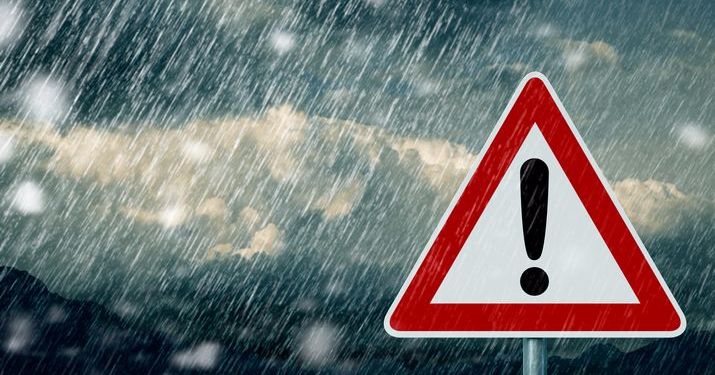Preparing Your Supply Chain During Hurricane Season
Last Updated September 17, 2024

Supply chain management (SCM) is a complex business on the best of days. Under adverse weather conditions such as a hurricane, a supply chain can quickly move from complex to chaotic, causing severe supply chain disruptions.
“Products coming into and out of an area that has a focused threat like this change dramatically before a threat’s arrival,” says Stanley Griffis, the Donald J. Bowersox and Robert W. Thull Professor in Logistics and Supply Chain Management at Michigan State University.
Fortunately, supply chain managers have methods to prepare for such an event. Keeping hurricane-related logistical problems to a minimum is not an impossible feat.
Much was learned in 2005. That year, Hurricane Katrina caused supply chain disruptions, knocking out power and transportation routes along the Gulf Coast.
Procter & Gamble, for example, had to ship in food, set up a phone center and even dig a well to supply employees’ water. Moving their coffee supply operations temporarily to Kansas City from New Orleans, the company eventually had operations back up within a month.
That’s just one example of organizations dealing with supply chain issues in the midst of devastation caused by a hurricane, whether it’s Katrina, Sandy or Harvey.
Hurricane-Related Supply Chain Disruptions
Preparing for a hurricane requires consideration of many possibilities. High winds combined with the potential for flooding make for a long list of potential problems.
Most of the danger is focused on certain areas of the country and certain types of facilities involved in the supply chain.
Geography
The East Coast has the most homes that could potentially be affected by hurricanes. As of 2022, Statista estimated that approximately 7.5 million homes in the United States faced the risk of storm surge.
Much of the danger also is focused on Texas and Florida, which have the largest coastlines on the Gulf of Mexico. Major metropolitan areas most at risk during the annual hurricane season include Miami, Tampa-St. Petersburg, Naples, and Jacksonville in Florida; New York City, New York; New Orleans, Louisiana; Virginia Beach, Virginia; and Houston, Texas.
Supply Chain Issues
For supply chain managers, knowing the areas most likely to experience hurricane-related damage is vital. So is knowing which links in the chain are most likely to experience disruption.
These include ports. Warehouses also are high on the list, as they often are built on low land near port terminals. Transportation routes also are vulnerable, as flood waters can wash out road surfaces. That can happen even with major highways, such as Interstate 10 during Hurricane Katrina.
Water and wind also can undercut railroads and weaken bridge foundations, leading to further transportation disruption.
Preparing for the Storm
Although much of this is beyond their influence, supply chain managers can prepare in areas where some control is possible. This gives them the best chance for a faster recovery and at keeping the supply chain operational as best as possible.
Awareness: Identifying facilities that are in high-risk areas helps managers prepare for the worst. This also includes maintaining a consistent system for checking on the weather every day along the supply chain footprint.
Alternate plan: As with Procter & Gamble temporarily moving from New Orleans to Kansas City in the aftermath of Hurricane Katrina, supply chain managers need to have an emergency plan at the ready for facilities in high-risk areas. Alternatives include temporary warehouse services and stepping up production at facilities outside the path of disruptive weather.
Coordination: Emergency plans must be developed far in advance with providers along the supply chain. Ensure each provider has a plan to provide services in the event of an emergency.
Multiple services: Another strategy is to line up suppliers in advance in case primary providers can no longer function in the aftermath of a hurricane. This includes ground and air transportation, as well as fuel suppliers, warehousing and storage, materials suppliers, and vehicle supply and storage.
Protecting the Supply Chain
Supply chain professionals have an array of SCM concepts, strategies and tools at their disposal to predict and mitigate disruptions caused by natural disasters, such as hurricanes or earthquakes, or man-made emergencies, such as terror attacks or cyber intrusions.
Supply Chain Visibility: Global corporations such as Jabil, a product solutions company, use supply chain visibility software to gather and analyze real-time data from their vast networks of suppliers. This allows supply chain managers to identify red flags and initiate alternate sourcing methods immediately.
Business Continuity Planning: According to the Federal Emergency Management Agency (FEMA), nearly 4 in 10 businesses never resume operations after a disaster. Lack of planning often is the culprit. Through business continuity planning, organizations can address a range of potential risks, develop emergency preparedness plans and help ensure an expedited return to normal operations.
Weather Analytics: Expanding access to Big Data and analytics software allows organizations to predict where, when and how weather conditions will impact their supply chains. For example, a hurricane may not only impede the flow of goods along a supply chain, but it may also prevent customers from getting to retail outlets to purchase emergency supplies. Supply chain managers use data to forecast product demand and ensure an adequate supply of necessities, whether it’s water, medications, generators, flashlights or plywood.
Resuming Normal Service
In the aftermath of a hurricane, the focus should be on the people affected by the storm. But for supply chain managers, the emphasis must also be on resuming normal operations as quickly as possible. Not doing so can cause steep losses in company revenue, which can mean the prospect of lost wages or jobs for employees, including in affected areas.
Preparing for all possibilities is challenging, but having a plan ready to roll in the aftermath of a hurricane can speed and ease recovery for supply chains and people alike.
Prepare for hurricane season and beyond.
Learn More About the Master’s Degree and Certificate Programs in Supply Chain Management from MSU.

